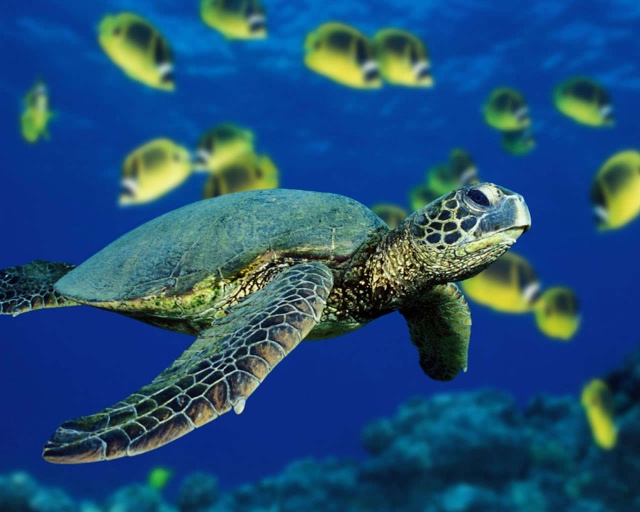Search
Latest topics
FACEBOOK LIKE BUTTON
CORAL PROPAGATION...
2 posters
Page 1 of 1
 CORAL PROPAGATION...
CORAL PROPAGATION...
With successful care of corals comes the added benefit (and necessity) of coral propagation (a.k.a. fragmenting or “fragging”). Fragging allows aquarists to capitalize on the fact that all corals can potentially outgrow the space given to them in the aquarium. Almost any coral can be fragged, and shared or traded with fellow hobbyists. Some aquarists even pay for some of the costs associated with keeping aquariums by selling corals on the Internet or trading them for store credit. Since most corals are colonies of many animals sharing a common skeleton, they can be broken into smaller parts. This happens in the wild, as storms, fish and currents can often break off portions of corals. By removing smaller portions of the colony, you can prevent corals from growing too close to one another, which causes aggression issues or shading of lower colonies. Just as you can train plants to grow in a certain way, you can shape a coral colony, as well. Also, pruning back corals keeps the coral growing quickly by exposing more of it to light and water flow. This is especially important with sensitive SPS corals. These can be fragged by breaking branches off with pliers, wire cutters or even bare hands. For corals with thick, heavy skeletons, such as LPS and encrusting types, use a hammer and chisel, power tools like a rotary tool with cutoff blade or a small saw; just remember to use power tools away from the water. Most soft corals can be cut with razor blades, knives or scissors. Also, all of these corals can be fragmented more passively, by letting them grow onto an adjacent rock and then breaking or cutting that rock free.
By propagating corals, our hobby can move away from the need to collect wild coral colonies, thus reducing the destruction of natural reefs. Aquarium-raised corals are able to cope with aquarium life and adjust to new conditions well. Having more than one colony of a given coral in your aquarium (or a separate propagation system) acts like insurance for your corals; you could lose one colony and still have some left.
Once a coral frag is removed from the colony, it can be anchored in the rockwork elsewhere, attached using underwater epoxy or cyanoacrylate gel superglue (this must be done out of water), placed into a frag pick or plug (there are now hundreds of different varieties out there) or traded with friends as is.
Coral fragging can also be used to save a colony’s life. When a coral goes through rapid tissue necrosis (RTN), the tissues quickly melt away into a brown jellylike substance, killing the coral in a short amount of time. By removing frags of healthy tissue, some of the colony can be saved. The key is to take the frags a good distance (1 inch, if possible) away from the dying tissue and get as many frags as you can. With SPS corals, this is often the only way to save an otherwise doomed colony. This can be applied to any type of coral, as LPS and soft corals will often get necrotic areas, as well.
By propagating corals, our hobby can move away from the need to collect wild coral colonies, thus reducing the destruction of natural reefs. Aquarium-raised corals are able to cope with aquarium life and adjust to new conditions well. Having more than one colony of a given coral in your aquarium (or a separate propagation system) acts like insurance for your corals; you could lose one colony and still have some left.
Once a coral frag is removed from the colony, it can be anchored in the rockwork elsewhere, attached using underwater epoxy or cyanoacrylate gel superglue (this must be done out of water), placed into a frag pick or plug (there are now hundreds of different varieties out there) or traded with friends as is.
Coral fragging can also be used to save a colony’s life. When a coral goes through rapid tissue necrosis (RTN), the tissues quickly melt away into a brown jellylike substance, killing the coral in a short amount of time. By removing frags of healthy tissue, some of the colony can be saved. The key is to take the frags a good distance (1 inch, if possible) away from the dying tissue and get as many frags as you can. With SPS corals, this is often the only way to save an otherwise doomed colony. This can be applied to any type of coral, as LPS and soft corals will often get necrotic areas, as well.
 Re: CORAL PROPAGATION...
Re: CORAL PROPAGATION...
great perception I agree

PHYTO4LIFE- Number of posts : 79
Tank Size- Gallons : 90G DT,30G sump
8-T5/4-20 000k/2-12 000K/2-blue&purple
2-lift sump's in-sump
2-power head's
3 dsb
70lbs LR
Reefer Reputation : 0
Registration date : 2009-05-18
 Similar topics
Similar topics» coral help..please
» Coral In Stock (Friday, April 25)
» Coral In Stock (April, 11 2014)
» coral life super skimmer 65 how to hook up
» Coral In Stock (Friday, April 25)
» Coral In Stock (April, 11 2014)
» coral life super skimmer 65 how to hook up
Page 1 of 1
Permissions in this forum:
You cannot reply to topics in this forum|
|
|

 Home
Home







» Coral In Stock (April, 11 2014)
» Official Canada Corals Introduction
» Looking for Bubble Tip Anemone
» A big Welcome to our new Sponsor CANADA CORALS!!
» Good News..
» BIG ALS MARCH 29-APRIL 4TH
» L.E.D Lighting
» ELEGANCE